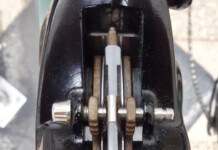By John Shafer — I ride bikes as much for the photos as for the ride, so I always carry some kind of camera when I’m pedaling. And by “camera,” I don’t mean a Smart Phone. I won’t dispute that Smart Phones are convenient and the current ones definitely capture high-quality photos – for a camera phone, anyway. However, if you really want great mountain bike or road ride photos, even an inexpensive point-and-shoot will do a better job than a Smart Phone. Right now you can go to any camera shop or big box store and buy a point-and-shoot that’s smaller than an iPhone, with better image quality, a real zoom lens, full HD video and built-in Wi-Fi – for under $200. To illustrate my point, I’ve chosen six pocket cameras that will help you take print-quality photos when you’re out on your bike. Read on to learn more about why you should carry a point-and-shoot camera on all of your bike rides.
Optics
There are three important differences between a Smart Phone camera and a *real* camera: optics, sensor size and controls. Smart Phones have tiny little fixed lenses with no optical zoom. If you do want to get closer you either have to “zoom with your feet” or use digital zoom, which essentially crops the image and interpolates to fill in the resolution lost from the crop. Digital zoom always results in noticeably compromised photo quality. On the other hand, entry-level point-and-shoots usually have 3x or longer optical zooms, and some pocket cameras actually have as much as 20x or even 30x optical zoom lenses. Yes, you read that right. I ride with a pocket camera that has a 30x 24-720mm (equivalent) optical zoom lens. To get that kind of zoom range with an interchangeable lens camera you’d have to spend thousands of dollars and I guarantee you wouldn’t want to carry that kind of bulk and weight on your bike.
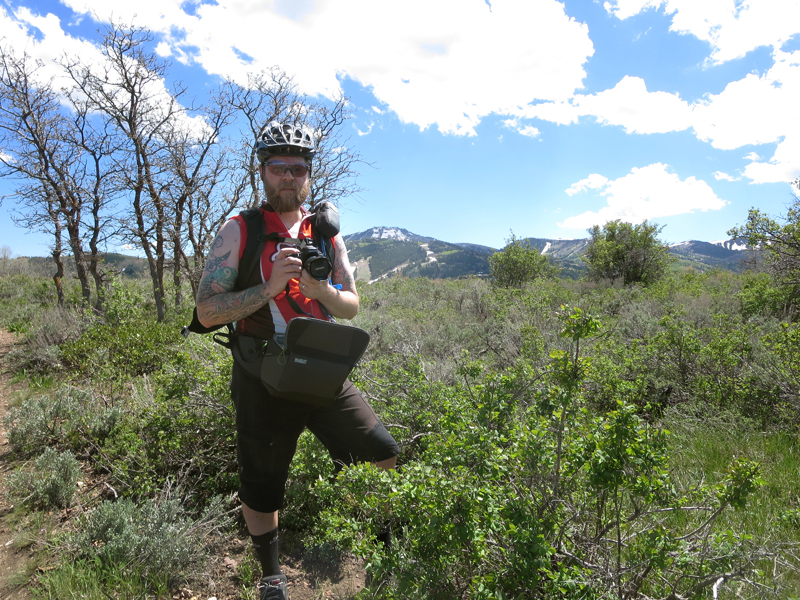
wide-angle zoom setting. Thanks to the little Canon’s 10x 240mm optical zoom, the photo below is zoomed all the way in on the mountain peak you see to the author’s left in the
first image. The newer Canon PowerShot ELPH 340 HS recommended in this article has an even longer, 12x 300mm equivalent optical zoom lens. And the Panasonic Lumix ZS40 that’s also
recommended, has a seemingly impossible 30x optical zoom lens. Photos: Jenni Curtis Shafer.
The effects of optical zoom are also very important. The look of a wide-angle lens is more or less self-explanatory. It distorts a bit, adds dramatic converging lines, and allows you to photograph in tight spaces. Telephoto lenses compress space, visually bringing objects closer together – something you can’t do by just getting closer. When you see a photo of a cyclist and there’s a huge snowy mountain looming in the background, that’s the optical effect of a long telephoto lens. You can’t duplicate that look with the fixed lens on your Smart Phone.
Bigger Is Better
Bigger is better when it comes to pixels. Camera companies have been trying tell us that more pixels mean better photos for years. Now, Smart Phone companies are doing the same thing. The truth is, pixel size is a lot more important than the number of “megapixels” a camera has. You could have three 16-megapixel cameras with very different levels of image quality because each one has a different size sensor. The sensor with the most surface area will almost always produce the best image quality because the larger pixels on that sensor collect more light. And more light means better quality.
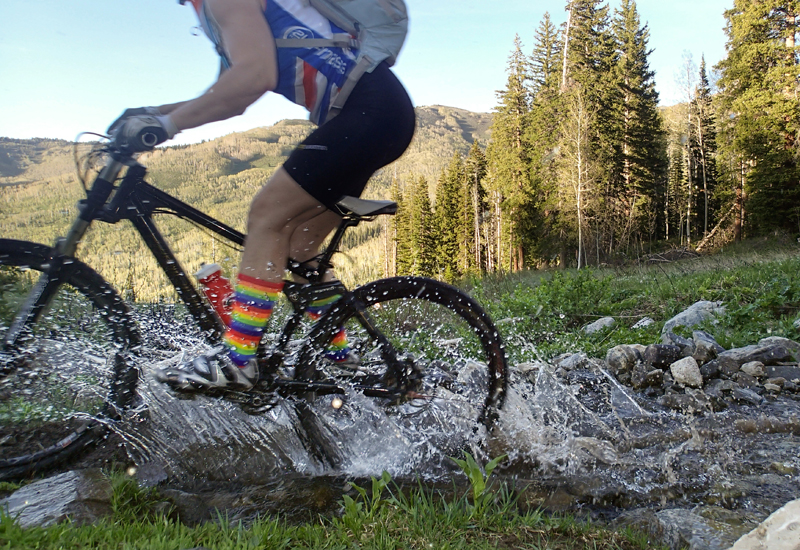
All of the recommended cameras at the end of this article have larger sensors than the iPhone or Samsung’s Galaxy S phones. The only Smart Phone with a sensor comparable to a standard point-and-shoot camera is the Nokia Lumia 1020. However, it only uses a small portion of that sensor. So even an inexpensive, entry-level point-and-shoot camera will capture better quality images than any Smart Phone. And a few of the cameras I recommend actually have much larger sensors and offer image quality approaching that of an entry-level mirrorless camera or DSLR.
Better Camera Controls
Camera controls and ergonomics are more important than most people realize. A camera with a thoughtful design and good controls will get out of the way and let you take great pictures without having to think about what you’re doing. Even the best Smart Phone camera is a phone before it’s a camera. They’re awkward to hold compared to a purpose-built camera and you have to dig into menus or choose an app if you want to access more than just the shutter release. Since a point-and-shoot camera is just that – a camera, the important controls are front and center. The shutter release button and zoom lever are placed right where your index finger and thumb can access them quickly and intuitively. And other important controls like exposure compensation, flash, white balance, video and burst rate all have dedicated external controls so you can access them with the press of a single button. That means you’ll be able to get set up sooner to get a burst of your buddy going over the bars at the bike park; and you’ll be able to quickly adjust the exposure compensation so you get perfectly exposed photos of that TdF pro riding with your club.
Recommended Point-and-Shoot Cameras
Enough talking about why you should carry a *real* camera when you’re riding. Either I’ve convinced you, or you’re just one of those people who doesn’t want anything more than what a Camera Phone offers. So let’s get on with the camera recommendations!
I picked out six current pocket cameras with various feature-sets and levels of performance to meet the needs of different kinds of cyclists. Prices range from under $200 to over $700 and there are a variety of zoom ranges and sensor sizes. They also all have full HD video and built-in Wi-Fi. So wanting to share photos immediately isn’t an issue anymore. With built-in Wi-Fi you can wirelessly transfer photos and videos from the camera to your phone, process them with the app of your choice, and post them straight to Facebook or Instagram.
As I said earlier, sensor size is the most important factor in determining image quality. So a larger sensor means better image quality – especially in low light. All of the cameras here are guaranteed to have better image quality than any Smart Phone, though. Zoom range is likely more confusing since our recommended cameras have zooms ranging from 3x all the way up to an unbelievable 30x optical zoom. The reason there’s such a wide range of zoom options is partly for people with different tastes, and partly because every camera is a mix of compromises and you don’t get everything in one camera – especially not one that fits in a pocket. Personally, I like a lot of zoom in a point-and-shoot camera. The compromise I made with my own 30x optical zoom point-and-shoot is a smaller sensor – I gave up some image quality for that huge zoom range. On the other hand, if your priority is image quality, then you’ll have to give up some zoom range to get a camera that fits in your pocket. The recommended camera below with the best image quality has a relatively short, 3.6x zoom lens. Only you can decide what’s right for you. But I think there are enough options here that everyone will find a pocket camera that can help take their cycling photos to the next level.
Canon PowerShot ELPH 340 HS – $199
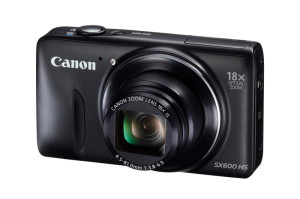
Let’s start with our most affordable pocket camera recommendation. Last year I bought my wife a Canon PowerShot ELPH 330 HS point-and-shoot for an anniversary gift. She says she didn’t know she wanted something better than her Smart Phone until I gave her the camera, and other people who’ve used it have had the same reaction. They didn’t realize that such a small, inexpensive camera could be so much better than their Smart Phone. The ELPH 330 HS has since been replaced by the PowerShot ELPH 340 HS, which has a 20% longer zoom range and a higher-resolution 16-megapixel sensor. With a tiny body, 12x 25-300mm (equivalent) optical zoom, great image quality, built-in Wi-Fi and a suggested retail price of $199, it’s one of the best pocket camera deals on the market. It’s incredible to me that Canon can pack a 12x zoom lens into such a tiny camera. Check out the two sample photos below to get an idea of what the ELPH 340 HS’s optical zoom lens can do.
Sony Cybershot RX100 II – $699
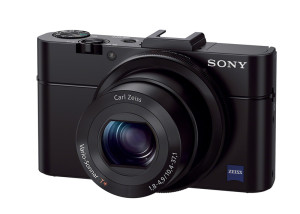
And now – the absolute best. If you’re the kind of person who accepts no-compromises – the Sony Cybershot RX100 II is your only pocket camera option. Even though it’s small enough to comfortably fit in a pants (or jersey) pocket, the RX100 II’s big 1-inch CMOS sensor is way better than you’ll find in any other point-and-shoot camera. That means great image quality regardless of conditions. It can even shoot in RAW mode so the most demanding photographers can squeeze the every bit of detail from their images. The RX100 II has PASM manual shooting modes for those who want them, and a 3.6x 28-100mm (equivalent) f/1.8-4.9 Carl Zeiss optical zoom lens for excellent low light and action photos. If you shoot a lot of video, the RX100 II captures 1920×1080 full HD video at 60 FPS. It also has built-in Wi-Fi so you can easily transfer photos and videos to your Smart Phone while you’re on the road so you don’t have to wait to get home to share your celebratory KOM photos on Instagram.
If the RX100 II isn’t enough, Sony an upgraded model will be available in June. The RX100 III adds a built-in electronic viewfinder, a faster-aperture (but shorter) zoom lens, a pop-up flash and more video options, including 720p at 120 FPS.
Olympus Stylus TG-3 – $349
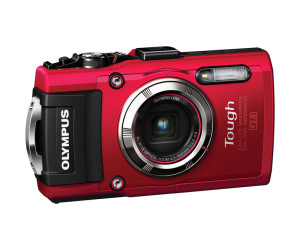
If you’re the kind of rider who’s out on the road or trail no matter what the weather’s like – you should be packing the Olympus Tough TG-3 in your jersey pocket. Waterproof, drop-proof, crushproof and freeze-proof, the Olympus TG-3 was designed for riding and every other kind of adventure – regardless of conditions. It has a bright 4x 25-100mm f/2.0-4.9 (equivalent) optical zoom lens, full HD video, built-in GPS and great macro abilities so you can take great pictures of snowflakes, the carbon fiber weave on your frame, and muddy chain links. The Olympus TG-3 also has built-in Wi-Fi. With the Olympus app installed on your Smart Phone, you can transfer photos from the camera to your phone or use your phone as a remote control, complete with live view display.
Panasonic Lumix ZS40 – $449
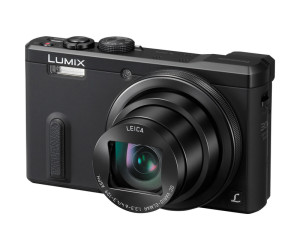
Pocket superzooms, point-and-shoot cameras with long zoom lenses, are my favorite type of compact camera because they put so much optical power in my pocket. And Panasonic’s new Lumix ZS40 pocket camera is the current object of my desire. It has a 30x 24-720mm (equivalent) Leica optical zoom lens, PASM manual shooting modes, built-in Wi-Fi and GPS, an electronic viewfinder, and 1920 x 1080 60p full HD video. It’s also one of only a couple pocket superzoom cameras that offers RAW shooting. There’s never been a camera that puts more power and control in a jersey pocket. Try zooming to 720mm with the digital zoom on your iPhone and let me know how it works out.
Sony Cybershot QX100 – $499
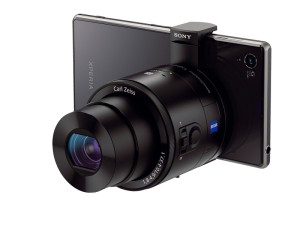
Sony is arguably one of the most creative camera makers right now and their QX100 “lens-style” camera is one of their most interesting creations, so far. With built-in Wi-Fi, a mobile app and a mounting bracket so you can attach it to your Smart Phone, the QX100 essentially turns your iPhone or Android phone into a real camera. Within the QX100’s cylindrical body is a large 1-inch sensor, a fantastic 3.6x 28-100mm (equivalent) f/1.8 Carl Zeiss zoom lens, a Micro SD memory card slot, a shutter release button and a customizable control ring – essentially, most of the components that make up Sony’s revered RX100 pocket camera (predecessor to the RX100 II, listed earlier in this article).
Panasonic Lumix LF1 – $299
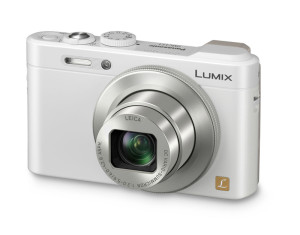
The Panasonic Lumix LF1 is an interesting combination of a high-end large sensor compact camera and a pocket superzoom. It has a great 12-megapixel 1/1.7-inch CMOS sensor and RAW shooting for excellent image quality in all conditions, a 7.1x 28-200mm f/2.0-5.9 Leica zoom lens, and built-in Wi-Fi so you can post to Instagram from anywhere. But what really sets it apart from other large sensor pocket cameras is the built-in electronic viewfinder. The viewfinder adds a third point of contact with your body helping to steady the camera for sharper photos and smoother video. With PASM manual shooting modes, 10 FPS burst and full HD 60i video, the LF1 is one of the best pocket cameras available for serious action shooters.
John Shafer, a.k.a “Photo-John,” is a professional photographer, journalist and adventurer. See more of his work at Photo-John.net.




